2011 Toyota Tundra Review
It was billed as the ‘truck that’s changing it all,’ and indeed upon launch as a 2007 model, the second generation Tundra was nothing like anything Toyota had done before. It was big, almost purposefully so, and the manufacturer even played on the new Texas factory, conceived especially to build it, designed to lure in those that had been buying F-150s and Silverados in droves.
FAST FACTS
| 1. Tundra Crew Max boasts the largest cab in the half-ton segment. |
| 2. Redesigned headrests have been added for the 2011 model year. |
| 3. Three bed lengths are available, 5-ft 6-in (Crew Max only) 6-ft 6-in and 8-ft. |
| 4. All three engines feature aluminum blocks and cylinder heads. |
| 5. Tundra models start at $24,435 for Regular Cab, $26,775 for Double Cab and $29,745 for Crew Max. |
However, despite offering some of the key ingredients on paper, namely regular, Double and Mega Cab versions, along with a hearty 5.7-liter V8 and a full frame, the Tundra has failed to really make the impact it was intended to. Sales have nowhere near reached Toyota’s expectations and a spate of recalls have plagued this big Japanese rig. As a result, despite the introduction of a mid-level 4.6-liter, 310 horsepower V8, which supplanted the 4.7 found in first generation trucks, there hasn’t been a whole raft of changes for 2011, which have been limited to essentially trim and equipment shuffles.
Nevertheless, despite the lack of change, the Tundra remains quite competitively priced, a regular cab 2011 model starts at $24,435, while a Double Cab begins at $26,775; finally the Crew Max stickers at a MSRP of $29,745 before options and taxes.
BIG, BULBOUS, BUT A BIT OUT OF LEFT FIELD
Back in the heady days of the early and mid 2000s, where it seemed every urban cowboy wanted a chrome slathered full-size pickup parked in the driveway of his McMansion; Toyota, along with Nissan, went for trucks that were purposefully big looking and somewhat intimidating.
However, from a styling standpoint, the Tundra looks a bit cartoonish, almost over the top. It’s as if it incorporates bulges just for the sake of having them. Toyota tweaked the big, bold grille and front bumper last year, adding three bars to the former, but combined with the curves, it seems voluptuous, rather than downright aggressive, lending it perhaps the look of a whale from some angles. Compared to the (slightly smaller) Tacoma, build quality isn’t overly impressive either, it’s okay, but there’s a distinct lack of the precision fit and paint finish we’ve come to expect from Toyota’s smaller trucks, especially around the box, rear fenders and tailgate.
Inside, the Tundra, is decidedly car-like. Anybody used to driving a Corolla or Camry would feel at home here. The seats are wide and very comfortable with decent support and rake adjustment. In Double Cab and especially Crew Max models there’s also plenty of room for back seat riders, standard cab trucks, despite having some of the longest doors of any full-size pickup, don’t have a huge amount of storage space behind the seats.
Both column and floor shifters (the latter with an optional center console) are available and easy to operate. A manual shift feature is incorporated on both of them, but like on the Ram 1500 seems a bit superfluous – we found it quirky and a bit confusing to operate. Dual column stalks for the lights and wash/wiper functions are very car-like, again lending the impression you’re piloting a Camry or Corolla, except on a much larger scale.
If there’s any drawback to the interior, it concerns gauge legibility and overall fit and finish. As far as the former is concerned, both the speedometer and tachometer are large and easy to read, however the auxiliary gauges seem to have been almost sprinkled on the instrument panel in random fashion and can be quite confusing to figure out, especially once in motion. As far as quality is concerned, those used to Toyota passenger cars and even the Tacoma, are likely to be disappointed. In particular the HVAC controls feel hollow, flimsy and cheap. A high grade Platinum package has been added for 2011, but even still, interior quality feels noticeably less than high-zoot rivals from Ford and Ram.
MORE POWERFUL BASE V6
Toyota offers three engines on the Tundra; a 4.0-liter V6 with 270 horsepower (up from 236 last year); a 4.6-liter V8 that cranks out 310 ponies and a big iForce 5.7-liter V8 rated at 381-hp. Given the size and weight of the Tundra, despite the extra power, torque isn’t vastly improved on the base V6 (278 versus 266 lb-ft) and combined with a standard five-speed automatic transmission (the V8s get six-speeders), there’s still few reasons to consider this engine over the eights, which deliver a better spread of power, refinement and comparable fuel economy (15/19 mpg city/highway versus 15/20).
The 4.6, a new introduction last year, is a big improvement over the 4.7 it replaces and thanks to variable valve timing on both the intake and exhaust camshafts, a decent amount of power and torque is available, pretty much right through the rev-range; aided by the standard 3.90:1 rear axle ratio, which provides good off the line punch (4.10 and 4.30 ratios are optional). The standard six-speed automatic transmission is rather smooth in operation, though is sometimes a bit hesitant to downshift for passing or climbing hills.
However, if you think you’ll save on gas by opting for the 4.6 over the larger 5.7-liter V8, forget it. During our evaluation we managed to get around 15 miles per gallon in the city, 20 on the open road; with the 5.7; the numbers were almost identical: 15 in the city, 19 on the highway.
The iForce is by far the best engine in the Tundra’s arsenal. Also an overhead cam unit, it feels more like a big-inch pushrod engine, with a substantial wallop of low-end torque (401 lb-ft) at 3600 rpm. Installed in a regular cab truck, you feel like you’re driving a hot rod most of the time instead of a full-size pickup, tire squeal is almost a given.
That said, besides acceleration and towing, it’s during mud plugging where that extra torque of the 5.7 really comes into its own, especially with the steeper axle ratios. With the electronically selected 4WD engaged, either in high or low range, the extra grunt is welcome when climbing out of ravines or up hilly trails, especially as the 4.6 feels noticeably weaker under such situations. The biggest problem is the tires.
Toyota equips the Tundra with Bridgestone rubber that’s really only suitable for on-road driving, on anything less than dry pavement, grip is a problem, even with the standard traction control; those looking to do some proper four-wheeling would be wise to invest in upgraded rims and rubber.
In terms of ride and handling; the Tundra is about middle of the road; the steering has quite a decent feel to it and although this truck feels its weight through the corners (it weighs around 5,300 lbs on average), handling for the most part is stable and predictable.
On tarmac surfaces, the ride is average at best, let down by noticeable rear end bounce, especially when the bed is empty. Although a characteristic of most pickups, particularly over bumpy surfaces at higher speeds, on the Tundra it feels noticeably worse than usual; with a tendency for the back end to dance around quite dramatically particularly over potholes or washboard surfaces. The aft section of the frame isn’t fully boxed and this, along with the configuration of the rear springs, likely adds to the problem.
All Tundras are equipped with four-wheel disc brakes and standard ABS. In terms of feel, stopping power is good, with excellent feedback through the pedal and good modulation thanks to a nicely dialed-in electronic brake distribution system. That said, stopping distance isn’t that short; a regular cab Tundra we tested did the 60-0 mph haul-down in a rather lengthy 141 feet.
A new feature for 2011 is a standard trailer sway control, which uses the truck’s ABS system to minimize buffeting and sideways movement when towing a trailer, particularly when decelerating. It’s a welcome addition and better calibrated than many aftermarket systems, something that up until now, Tundra owners were required to purchase if they wanted to do any towing. On that front, even with revised ratings in capacity, the Tundra is still able to yank a sizeable amount of weight behind it. Properly outfitted a 4×2 rig can tow a maximum of 10,400 lbs.
THE VERDICT
Despite its drawbacks, there’s still quite a lot to like about the Tundra. The iForce V8 is an impressive piece of hardware, while interior comfort is exemplary for this class of truck. That said, indifferent workmanship, frame flexing issues and a somewhat lack of significant change mean that unless you’re totally brand loyal, at this point in time, there are newer, more capable alternatives available in the full-size half-ton segment.
RELATED READING
2011 Ford F-150 Review – First Drive
2011 Ford F-150 EcoBoost Review
2010 Toyota Tundra 4×4 Double Cab 4.6L Review
2009 Chevrolet Silverado
2009 GMC SIERRA
LOVE IT
- Performance (5.7-liter iForce V8)
- Seat comfort
- Towing capability
LEAVE IT
- Fit and finish
- Ride quality
- Base powertrain underwhelming
More by Huw Evans






















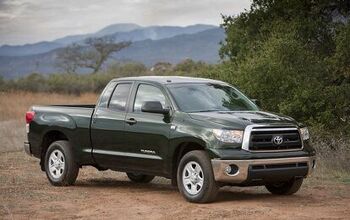
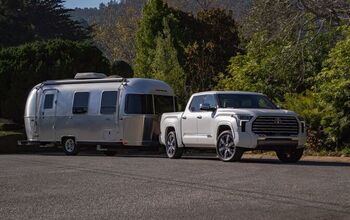

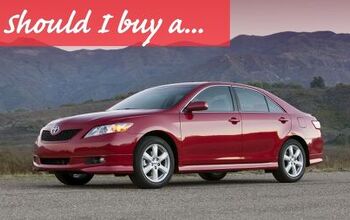
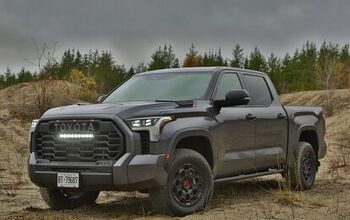

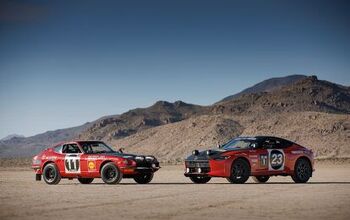
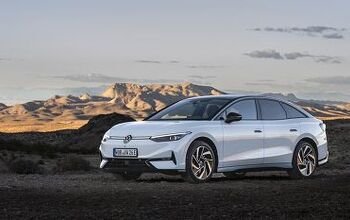

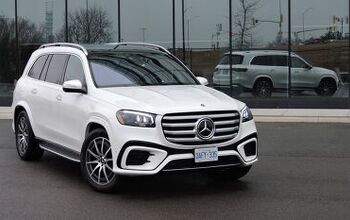


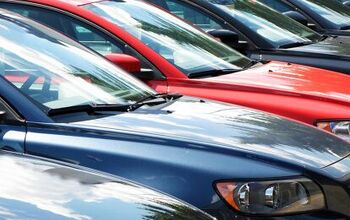
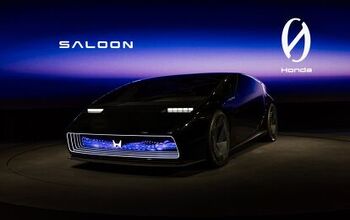

Comments
Join the conversation
Just got a 2013 Tundra its a nice truck but the High Beam Headlight shins to the left Lane leaving the right side of road dark , They tell me no Adjustment isn't that something Toyota has a Safety Problem Lets hope it won't take another Law suit to get it a fix
I bought a 2011 CrewMax 4X4 SR5 with the off-road package on it. It was used still with an incredible 125K warranty, Toyota certified and I couldn't be happier. Yes, the back end bounces around as any pickup with off-road suspension does. This isn't my first rodeo off-roading and if you want road manners, then buy a car. As far as a headlight problem; that's easily fixed by the owner. All I know is, it has massive amounts of power, instills confidence when on or off road, tons of interior room and I LOVE the shifting option. The downshifting hesitation occurs when the stability control is on. The engine power would cut the rear-end loose if it wasn't on. If you read the directions, simply turn it off and leave the limited-slip differential on and you have solved the downshifting problem. That being said, if you can't drive, disregard the previous three sentences. This truck rocks, and I love driving it. Whether on or off-road, I have no issues or hesitation taking it anywhere. I can haul my CJ7 on a dual-axle trailer with trailer brakes and I barely notice its back there. I have had Chevy and Ford in the past and I loved my F150 but, this truck leaves them in the dust.